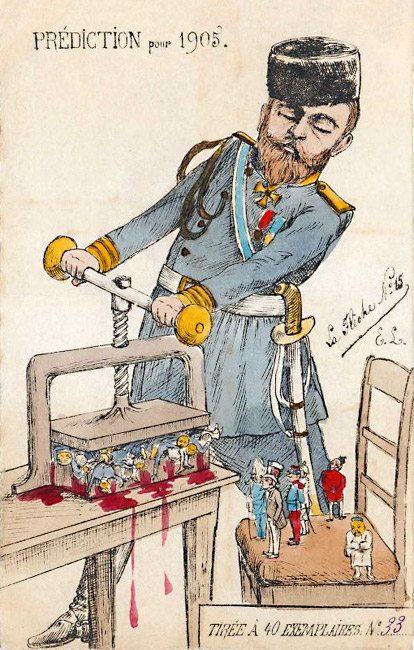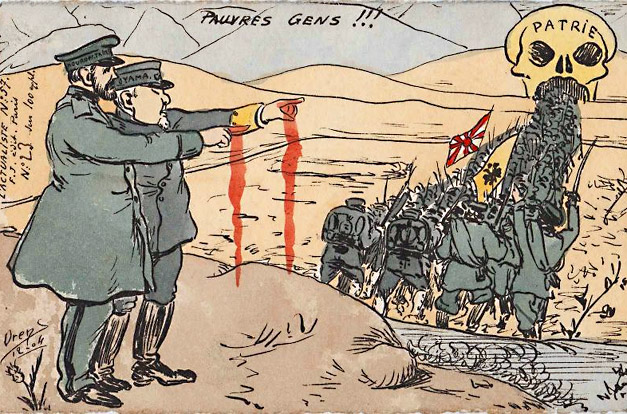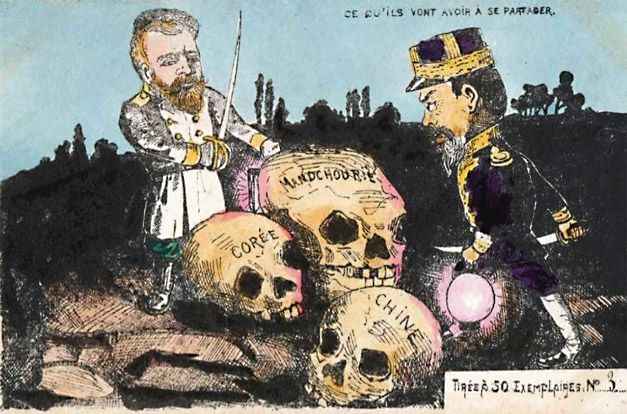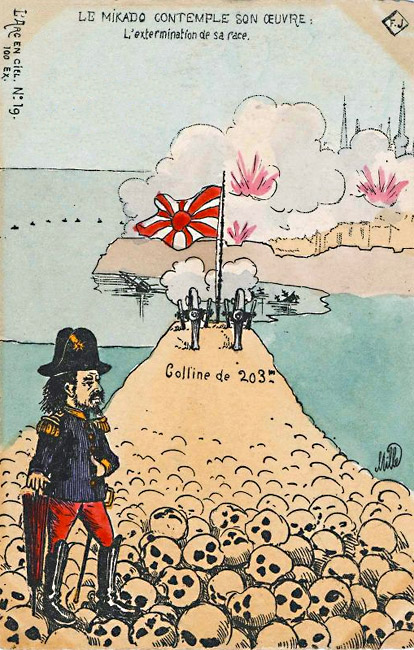War Horrors
Foreign postcards of the Russo-Japanese War were many things: instructive, imaginative, outrageous, commercial, and ephemeral. They were also, in many instances, grim reflections of the true horror of war in general, and this war in particular—where fatalities and casualties on both sides were great. French artists were particularly adept in transcending their nation’s formal support of the Russians and conveying the human costs of the conflict—with leaders and generals brutalizing not only the enemy, but their own people as well. It was also French commentators who were most keenly sensitive to the deadly costs of the Russo-Japanese War on peoples who belonged to neither side: Chinese, Manchurians, and Koreans. There are no heroes in these bleak renderings, although U.S. president Theodore Roosevelt emerges as a figure of reason in mediating a negotiated end to the war. (Roosevelt won the Nobel Peace Prize in 1906 for his endeavors.)
“Today's Question” by Rostro
[2002.6781]
“The Ones that They are Going to Split”
[2002.4134]
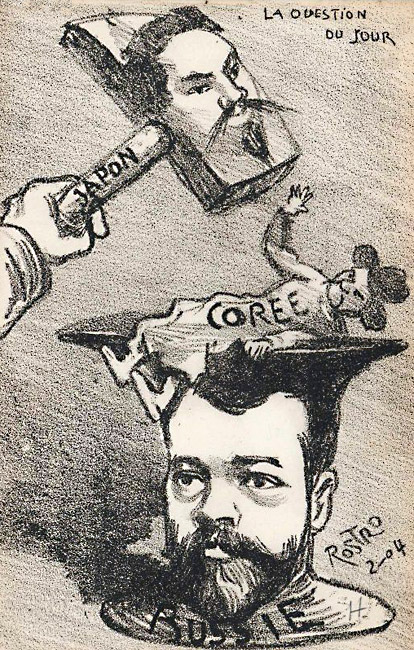
“Poor People!” (No.57 from the series “L'Actualiste”)
[2002.3822]
“Roosevelt: Assez!–Enough!–Genug!” by T. Bianco
[2002.3761]
“The Mikado Contemplates His Work” by Mille
(No.19 from the series “L'Arc-en-Ciel”)
[2002.3800]
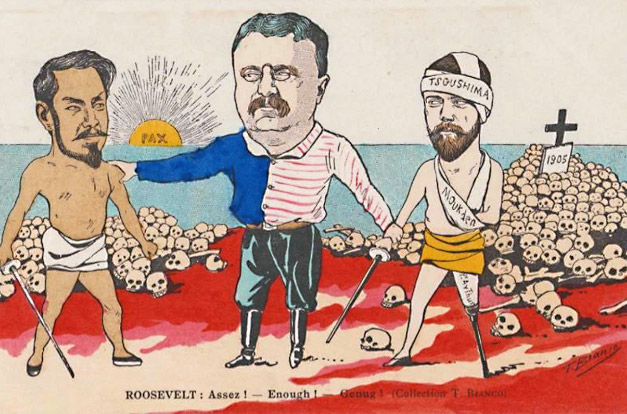
“Prediction for 1905” (No 15 from the series “La Fleche”)
[2002.6821]
